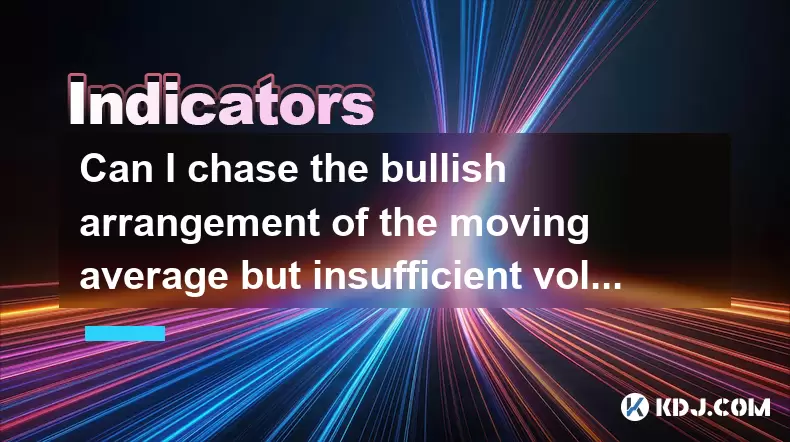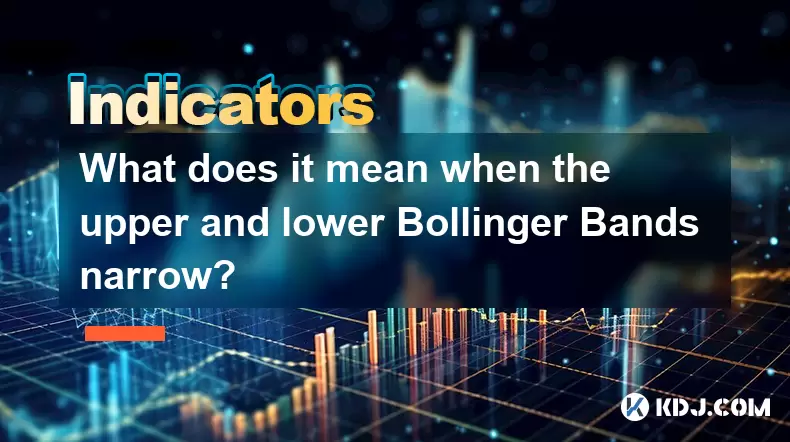-
 Bitcoin
Bitcoin $116400
-0.36% -
 Ethereum
Ethereum $4033
3.40% -
 XRP
XRP $3.302
-1.26% -
 Tether USDt
Tether USDt $1.000
-0.02% -
 BNB
BNB $796.1
1.67% -
 Solana
Solana $177.8
1.89% -
 USDC
USDC $0.9999
0.00% -
 Dogecoin
Dogecoin $0.2314
4.09% -
 TRON
TRON $0.3381
0.14% -
 Cardano
Cardano $0.7989
1.22% -
 Stellar
Stellar $0.4496
-1.84% -
 Chainlink
Chainlink $20.42
9.42% -
 Hyperliquid
Hyperliquid $41.17
0.88% -
 Sui
Sui $3.914
3.77% -
 Bitcoin Cash
Bitcoin Cash $584.7
1.52% -
 Hedera
Hedera $0.2632
-0.54% -
 Avalanche
Avalanche $24.09
3.40% -
 Ethena USDe
Ethena USDe $1.001
-0.02% -
 Litecoin
Litecoin $123.2
1.33% -
 Toncoin
Toncoin $3.318
-0.04% -
 UNUS SED LEO
UNUS SED LEO $8.984
-0.05% -
 Shiba Inu
Shiba Inu $0.00001323
2.85% -
 Uniswap
Uniswap $10.90
4.41% -
 Polkadot
Polkadot $3.999
3.34% -
 Dai
Dai $1.000
0.01% -
 Cronos
Cronos $0.1630
9.64% -
 Bitget Token
Bitget Token $4.484
0.82% -
 Monero
Monero $272.4
2.44% -
 Pepe
Pepe $0.00001173
6.03% -
 Aave
Aave $290.8
2.88%
Can I chase the bullish arrangement of the moving average but insufficient volume?
Chasing a bullish trend in crypto without sufficient volume is risky; it may reverse quickly, leading to potential losses. Use volume confirmation and multiple time frames for safer trades.
Jun 05, 2025 at 05:42 am

Understanding Moving Averages in Cryptocurrency Trading
Moving averages are essential tools used by traders in the cryptocurrency market to identify trends and potential entry or exit points. They smooth out price data to create a single flowing line, making it easier to identify the direction of the trend. The most common types of moving averages used in trading are the Simple Moving Average (SMA) and the Exponential Moving Average (EMA). The SMA calculates the average price over a specific period, while the EMA gives more weight to recent prices, making it more responsive to new information.
In the context of cryptocurrency trading, a bullish arrangement of moving averages typically refers to a scenario where shorter-term moving averages are positioned above longer-term moving averages. This arrangement suggests that the asset's price is experiencing an upward trend, as the more recent price data (reflected in the shorter-term averages) is higher than the older price data (reflected in the longer-term averages). Traders often interpret this as a signal to buy or hold the asset, anticipating further price increases.
The Role of Volume in Confirming Trends
Volume is a crucial indicator in the cryptocurrency market, as it provides insight into the strength and sustainability of a price movement. High volume during a price increase indicates strong buying interest and can confirm the validity of a bullish trend. Conversely, low volume may suggest a lack of conviction among traders, potentially indicating that the trend may not be sustainable.
When considering the bullish arrangement of moving averages, insufficient volume can be a red flag for traders. It suggests that the upward movement in price may not be supported by strong market participation. This could mean that the trend is driven by a small number of traders or that the market sentiment is not as bullish as the moving averages might suggest. Therefore, while the moving averages may signal a bullish trend, the lack of volume could undermine the confidence in that trend.
Chasing the Bullish Arrangement with Insufficient Volume: Risks and Considerations
Chasing a bullish arrangement of moving averages without sufficient volume carries significant risks. The primary risk is that the trend may reverse more quickly than anticipated, leading to potential losses for traders who entered positions based on the moving average signals alone. Without strong volume to support the price movement, the trend is more susceptible to sudden changes in market sentiment or external factors.
Traders should consider several factors before deciding to chase a bullish arrangement with insufficient volume:
- Market Context: Is the broader market also showing signs of bullishness, or is the asset moving against the general trend?
- Technical Indicators: Are other technical indicators, such as the Relative Strength Index (RSI) or the Moving Average Convergence Divergence (MACD), also confirming the bullish trend?
- Fundamental Analysis: Are there any fundamental developments or news events that could impact the asset's price?
Strategies for Trading with Moving Averages and Volume
When trading cryptocurrencies, it's essential to use a combination of indicators to increase the probability of successful trades. Here are some strategies that incorporate both moving averages and volume:
Volume Confirmation: Before entering a trade based on a bullish arrangement of moving averages, wait for a significant increase in volume to confirm the trend. This can help filter out false signals and increase the likelihood of a sustained upward movement.
Divergence Analysis: Pay attention to any divergence between the price and volume. If the price is rising but volume is decreasing, it could be a warning sign that the bullish trend is losing momentum.
Multiple Time Frame Analysis: Use different time frames to analyze the moving averages and volume. A bullish arrangement on a shorter time frame may be more convincing if it is also present on longer time frames, especially if accompanied by increasing volume.
Practical Example of Trading with Moving Averages and Volume
To illustrate how to incorporate both moving averages and volume in your trading decisions, let's consider a practical example:
Suppose you are analyzing the price chart of Bitcoin (BTC) and notice that the 50-day EMA has crossed above the 200-day EMA, indicating a bullish arrangement. However, the trading volume has been declining over the past few days. Here's how you might proceed:
- Initial Observation: Recognize the bullish arrangement of the moving averages, but note the lack of volume.
- Volume Confirmation: Wait for a significant increase in volume to confirm the bullish trend. If volume starts to increase, it could be a good entry point.
- Divergence Check: Monitor the price and volume for any signs of divergence. If the price continues to rise but volume decreases, it might be prudent to wait or consider a smaller position.
- Multiple Time Frame Analysis: Check the moving averages and volume on different time frames. If the bullish arrangement and increasing volume are also present on weekly charts, it could provide additional confidence in the trend.
FAQs
Q1: Can moving averages alone be reliable indicators for trading cryptocurrencies?
A1: While moving averages can be useful in identifying trends, relying solely on them can be risky. It's important to use them in conjunction with other indicators, such as volume, RSI, and MACD, to confirm trends and increase the reliability of trading signals.
Q2: How can I determine if the volume is sufficient to support a bullish trend?
A2: Sufficient volume can be determined by comparing the current volume to historical averages. If the current volume is significantly higher than the average, it suggests strong market participation and can support a bullish trend. Additionally, look for consistent increases in volume over time to confirm the trend's strength.
Q3: What are the potential consequences of chasing a bullish trend without sufficient volume?
A3: Chasing a bullish trend without sufficient volume can lead to entering a trade just before a price reversal, resulting in potential losses. Without strong volume to support the trend, the price movement may be more vulnerable to sudden changes in market sentiment, making the trade riskier.
Q4: Are there any specific tools or platforms that can help me analyze moving averages and volume in cryptocurrency trading?
A4: Many trading platforms and charting tools offer the ability to analyze moving averages and volume. Popular options include TradingView, which provides customizable charts and indicators, and Coinigy, which offers advanced trading tools specifically for cryptocurrencies. These platforms allow you to overlay moving averages and volume data on price charts to make more informed trading decisions.
Disclaimer:info@kdj.com
The information provided is not trading advice. kdj.com does not assume any responsibility for any investments made based on the information provided in this article. Cryptocurrencies are highly volatile and it is highly recommended that you invest with caution after thorough research!
If you believe that the content used on this website infringes your copyright, please contact us immediately (info@kdj.com) and we will delete it promptly.
- Decentralized Data: Taking the Driver's Seat in the Data Economy
- 2025-08-09 14:30:11
- Bitcoin vs. Gold: The Store-of-Value Showdown in the Digital Age
- 2025-08-09 14:30:11
- BlockDAG, Stellar, and Crypto Adoption: Navigating the Hype
- 2025-08-09 14:50:12
- Litecoin Price Surge: Riding the Wave of Institutional Interest and ETF Hopes
- 2025-08-09 14:50:12
- Chainlink's Wild Ride: Whales Are Still Loading Up on LINK!
- 2025-08-09 15:10:11
- Ruvi AI: Solana's New Challenger Dominating Token Sales with AI Innovation
- 2025-08-09 14:55:15
Related knowledge

What does it mean when the Triple Moving Average (TRIX) turns downward but the price doesn't fall?
Aug 09,2025 at 12:42pm
Understanding the Triple Moving Average (TRIX) IndicatorThe Triple Moving Average, commonly known as TRIX, is a momentum oscillator designed to filter...

What does it mean when the Williams' oscillator repeatedly hits bottoms but fails to rebound?
Aug 09,2025 at 09:28am
Understanding the Williams %R OscillatorThe Williams %R oscillator, developed by Larry Williams, is a momentum indicator used in technical analysis to...

What does it mean when the upper and lower Bollinger Bands narrow?
Aug 09,2025 at 03:00pm
Understanding Bollinger Bands in Cryptocurrency TradingBollinger Bands are a widely used technical analysis tool in the cryptocurrency market, develop...

What does it mean when the 5-day moving average crosses the 10-day moving average but the 20-day moving average remains upward?
Aug 09,2025 at 03:35pm
Understanding Moving Averages in Cryptocurrency TradingMoving averages are foundational tools in technical analysis, especially within the cryptocurre...

What does a double bottom pattern on the Williams indicator breaking through the 50-day midline indicate?
Aug 09,2025 at 10:56am
Understanding the Williams %R IndicatorThe Williams %R indicator, developed by Larry Williams, is a momentum oscillator that measures overbought and o...

What does it mean when the MACD-histogram turns from green to red but the DIF line fails to form a golden cross?
Aug 09,2025 at 10:15am
Understanding the MACD and Its ComponentsThe MACD (Moving Average Convergence Divergence) is a widely used technical analysis tool in the cryptocurren...

What does it mean when the Triple Moving Average (TRIX) turns downward but the price doesn't fall?
Aug 09,2025 at 12:42pm
Understanding the Triple Moving Average (TRIX) IndicatorThe Triple Moving Average, commonly known as TRIX, is a momentum oscillator designed to filter...

What does it mean when the Williams' oscillator repeatedly hits bottoms but fails to rebound?
Aug 09,2025 at 09:28am
Understanding the Williams %R OscillatorThe Williams %R oscillator, developed by Larry Williams, is a momentum indicator used in technical analysis to...

What does it mean when the upper and lower Bollinger Bands narrow?
Aug 09,2025 at 03:00pm
Understanding Bollinger Bands in Cryptocurrency TradingBollinger Bands are a widely used technical analysis tool in the cryptocurrency market, develop...

What does it mean when the 5-day moving average crosses the 10-day moving average but the 20-day moving average remains upward?
Aug 09,2025 at 03:35pm
Understanding Moving Averages in Cryptocurrency TradingMoving averages are foundational tools in technical analysis, especially within the cryptocurre...

What does a double bottom pattern on the Williams indicator breaking through the 50-day midline indicate?
Aug 09,2025 at 10:56am
Understanding the Williams %R IndicatorThe Williams %R indicator, developed by Larry Williams, is a momentum oscillator that measures overbought and o...

What does it mean when the MACD-histogram turns from green to red but the DIF line fails to form a golden cross?
Aug 09,2025 at 10:15am
Understanding the MACD and Its ComponentsThe MACD (Moving Average Convergence Divergence) is a widely used technical analysis tool in the cryptocurren...
See all articles

























































































